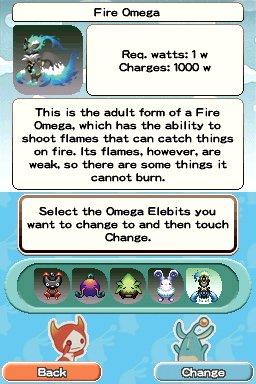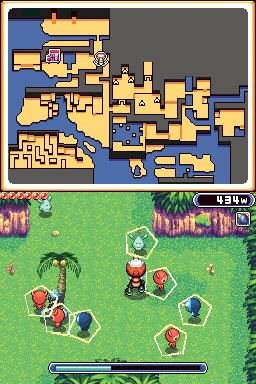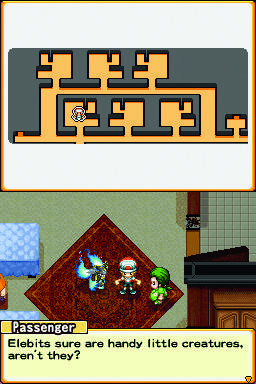GamesRadar+ Verdict
Pros
- +
Keeps that Elebits vibe
- +
Still manages to be its own creature
- +
Zippy tagging effects
Cons
- -
GBA-quality sprites
- -
Repeats its two or three tricks
- -
Totally unmemorable music
Why you can trust GamesRadar+
The first-person perspective has been dropped, but Elebits%26rsquo; Wii DNA is present in Kai%26rsquo;s mission to hoover up the electro-beasts. Capturing Elebits (needed to open doors and operate machinery) is a neat, tactile affair %26ndash; you shake the scenery with your stylus, tag the escaping %26rsquo;Bits, and tap your sidekick Zero to grab them. In a nice arcadey twist, tagging the first Elebit begins a countdown %26ndash; you%26rsquo;ve got a few seconds to try and grab more before Zero brings them in.

Konami rarely get touchy-feely with the stylus, which is a shame, as Elebits demonstrates excellent command. Quick reflex tagging works nicely in conjunction with the drag-and-drop physics (chunky and fun rather than scientifically accurate). Likewise, a range of Omega Elebits %26ndash; who are swapped in and out of Zero%26rsquo;s place %26ndash; offer special abilities (fire streams, ice nuggets, magnetic force) aimed with the stylus.
In a way, the Omega concept could be the idea Pok%26eacute;mon%26rsquo;s been looking for. As in Nintendo%26rsquo;s monster hit you collect %26rsquo;em all, but each of %26rsquo;em happens to work like one of Link%26rsquo;s tools in Phantom Hourglass. A bestiary becomes a tool belt as dungeons are constructed around your elemental powers; screens of stats are exchanged for physical usefulness. This is kind of what Nintendo were hinting at in Pok%26eacute;mon Ranger, only developed to a more satisfying end.

Sadly, Elebits%26rsquo; puzzle confidence vanishes elsewhere. Dungeons are good in that they see a high concentration of Omega action, but the overworlds struggle to hold your attention. You%26rsquo;re constantly shaking rocks and trees, with only a handful of near-harmless critters to up the difficulty. There%26rsquo;s no combat as such %26ndash; you cansmash threats with levitated rocks %26ndash; although boss encounters impress in a Phantom Hourglass kind of way.
It loses something, too, in the move from the Wii%26rsquo;s kitchens, bathrooms and suburbs to more fantastical lands. That the story revolves around a talking bus hints at the target audience (children and bus spotters), but the anarchic silliness of trashing a house Finders Keepers-style is missed in Elebits%26rsquo; selection of caves, beaches and the obligatory ice world. If the repetitive Elebit-tagging doesn%26rsquo;t get you, the ultra-cuteness will. Still, games that embrace the DS to this extent are few and far between. For this alone, Elebits DS needn%26rsquo;t feel too ashamed in the shadow of its Wii brother.
Feb 25, 2009
More info
| Genre | Adventure |
| Description | This DS sequel still keeps the Elebits vibe and is a must play for fans of the previous game. |
| Platform | "DS" |
| US censor rating | "Everyone" |
| UK censor rating | "3+" |
| Release date | 1 January 1970 (US), 1 January 1970 (UK) |



